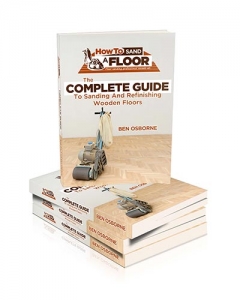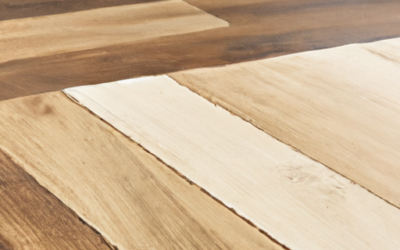In this article, you will discover the latest information on an exciting opportunity to upgrade your living space with the ongoing Flooring Sale. With a wide range of high-quality flooring options available at discounted prices, this event is a must-visit for those seeking to enhance both the aesthetic appeal and functionality of their homes. From elegant hardwood to durable laminate and versatile vinyl, the Flooring Sale offers something for every taste and budget. Don’t miss out on this chance to transform your floors and elevate your living experience.

Types of Flooring
Hardwood Flooring
Hardwood flooring is a popular choice for many homeowners due to its durability and timeless elegance. It adds a touch of sophistication and warmth to any room, making it a sought-after option for those looking to enhance the aesthetic appeal of their home. Additionally, hardwood flooring can withstand heavy foot traffic and is known to last for decades with proper maintenance.
Laminate Flooring
Laminate flooring offers a cost-effective and versatile alternative to hardwood. It is designed to mimic the look of hardwood, stone, or tile, making it a popular choice for budget-conscious individuals who still want the aesthetic appeal of natural materials. Laminate flooring is known for its easy installation process and ability to resist scratches and dents, making it ideal for high-traffic areas.
Vinyl Flooring
Vinyl flooring is highly durable and resistant to water, making it an excellent option for bathrooms, kitchens, and other moisture-prone areas. It is known for its easy maintenance and ability to withstand heavy use. Vinyl flooring comes in a wide range of styles, including waterproof options, which further enhances its appeal for homeowners seeking both fashion and function.
Tile Flooring
Tile flooring offers a variety of design options and is especially popular in kitchens and bathrooms. It is known for its durability and ability to withstand spills and stains. Tile flooring can be easily cleaned and maintained, making it a practical choice for those with busy households or who want a low-maintenance flooring option.
Carpet Flooring
Carpet flooring provides comfort and noise reduction, making it an ideal choice for bedrooms, living rooms, and other areas where comfort and insulation are desired. It comes in various styles, colors, and textures, allowing homeowners to choose an option that complements their interior design. Carpet flooring can be cozy underfoot and provides a sound barrier, reducing noise transmission between floors.
Benefits of Different Flooring Types
Durability and Elegance of Hardwood
Hardwood flooring is not only durable but also adds a touch of elegance to any space. Its natural beauty enhances the overall aesthetic appeal of a room and can elevate the value of a property. With proper care and maintenance, hardwood floors can last for many years, making them a worthwhile investment.
Affordability and Versatility of Laminate
Laminate flooring offers a budget-friendly alternative to hardwood, without compromising on style and versatility. It can mimic the appearance of different types of flooring, allowing homeowners to achieve their desired look without breaking the bank. Laminate flooring is also easy to install, making it a popular choice for DIY enthusiasts.
Water Resistance and Easy Maintenance of Vinyl
Vinyl flooring is known for its water resistance and ability to withstand spills and moisture. It is an excellent choice for areas prone to water exposure, such as bathrooms and kitchens. Vinyl flooring requires minimal maintenance, making it a convenient option for those with a busy lifestyle.
Variety and Durability of Tile
Tile flooring provides a wide range of design options, allowing homeowners to create unique patterns and styles that suit their taste. Additionally, tile flooring is known for its durability and ability to withstand heavy foot traffic. Its resistance to stains and scratches makes it an ideal choice for areas with high usage.
Comfort and Noise Reduction of Carpet
Carpet flooring offers a comfortable and cozy feel underfoot. It acts as an insulator, providing warmth and sound absorption, which can be beneficial in bedrooms and living rooms. Carpet flooring is available in various styles and textures, allowing homeowners to customize their space to their liking.
Discount Offers on Flooring
Percentage Discounts on Selected Floorings
During a flooring sale, it is common to come across percentage discounts on selected flooring options. This allows homeowners to save a certain percentage off the regular price, making it an excellent opportunity to upgrade their flooring at a more affordable cost. These discounts may vary depending on the retailer and the specific flooring type.
Buy One Get One Free Deals
Some flooring sales offer buy one get one free deals, allowing homeowners to receive an additional box or set of flooring materials at no extra cost. This can be particularly advantageous for those planning to install flooring in multiple rooms or larger areas.
Clearance Discounts on Overstocked Items
During a flooring sale, retailers may offer clearance discounts on overstocked items. This provides an opportunity for homeowners to purchase quality flooring materials at significantly reduced prices. It is important to note that these items may have limited availability and may be discontinued, so it is advisable to act quickly to secure the desired flooring.
Package Deals for Multiple Rooms
To encourage customers to purchase flooring for multiple rooms, retailers may offer package deals. These deals typically include discounted pricing or special offers when buying flooring materials for multiple rooms or a whole house. Such packages streamline the purchasing process and can offer additional savings.
Financing Options for Flooring Purchase
In order to make flooring more affordable, many retailers offer financing options during sales events. This allows homeowners to spread out the cost of their flooring purchase over several months or years, making it more manageable. It is important to carefully review the terms and conditions of any financing agreement to ensure it aligns with your financial goals and constraints.
Shopping Tips for Flooring Sale
Measure Your Floor Area Correctly
Before making any purchases, it is essential to accurately measure the floor area that requires flooring. This ensures that you purchase the correct amount of materials and minimizes the risk of running out or having excessive leftovers. It is advisable to seek professional assistance or use reliable measuring tools to ensure accurate measurements.
Consider Lifestyle and Foot Traffic
When choosing the right flooring type, consider your lifestyle and the amount of foot traffic each area of your home receives. High-traffic areas, such as entryways and living rooms, may benefit from more durable flooring options like hardwood or tile. On the other hand, bedrooms and areas where comfort is a priority may be better suited for carpet flooring.
Research and Compare Prices
To make the most of a flooring sale, invest time in researching and comparing prices from different retailers. This can help you identify the best deals and ensure that you are getting the most value for your money. Additionally, consider looking for online reviews or testimonials to gauge the quality and customer satisfaction of different flooring options.
Read Reviews and Consider Recommendations
Reading reviews from other homeowners who have previously purchased the flooring you are considering can provide valuable insights. Their experiences can help you make an informed decision and avoid potential issues or pitfalls. Additionally, seeking recommendations from friends, family, or professionals in the industry can offer valuable guidance.
Ask About Installation Services
During a flooring sale, retailers may offer discounted or complimentary installation services. It is important to inquire about these options and evaluate whether utilizing professional installation services aligns with your budget and needs. Professional installation can ensure a proper and efficient installation process, ultimately maximizing the lifespan and performance of your flooring.

DIY Flooring Installation
Selecting the Right Tools and Materials
When embarking on a DIY flooring installation project, it is crucial to have the right tools and materials at your disposal. This includes tools such as measuring tape, a saw, a hammer, and a level, as well as the appropriate flooring materials for your chosen type of flooring. Ensure that you have all necessary equipment before starting the installation process.
Preparing the Subfloor
Before laying the new flooring, it is essential to prepare the subfloor properly. This involves removing any existing flooring, ensuring a clean and level surface, and addressing any structural or moisture issues. Proper subfloor preparation sets the foundation for a successful and long-lasting installation.
Installing the Underlayment
Depending on the type of flooring you have chosen, installing an underlayment may be necessary. The underlayment provides additional support, insulation, and moisture barrier. It is important to follow the manufacturer’s instructions and guidelines when installing the underlayment to ensure a proper fit and optimal performance.
Laying the Flooring Boards or Tiles
When installing flooring boards or tiles, it is crucial to carefully follow the manufacturer’s installation instructions. This includes laying the flooring in the correct pattern, ensuring proper spacing, and utilizing appropriate adhesives or fasteners. Take your time during the installation process and make sure each piece fits snugly and securely.
Cutting and Finishing Touches
Cutting flooring materials to fit around corners, doorways, or other obstacles may be necessary during the installation process. Ensure that you have the appropriate tools and techniques to make accurate and clean cuts. Once the flooring is installed, apply any necessary finishing touches, such as trim or molding, to complete the overall look.
Finding Reliable Flooring Contractors
Ask for Recommendations
One of the best ways to find reliable flooring contractors is by asking for recommendations from friends, family, or other homeowners who have recently had flooring installations. Their firsthand experiences can provide valuable insights and help you narrow down your options.
Check Credentials and Certifications
When considering different flooring contractors, it is important to perform due diligence and check their credentials and certifications. Look for contractors who are licensed and insured, as this ensures that they comply with industry standards and have the necessary expertise to successfully complete the job.
Request Quotes and Estimates
Obtaining quotes and estimates from multiple flooring contractors is an essential step in finding the right professionals for your project. Compare the provided prices, their scope of work, and the materials included in each quote. Be cautious of contractors who offer significantly lower prices, as this may be indicative of subpar materials or quality of work.
Inquire About Warranty and Guarantees
A reputable flooring contractor should offer warranties or guarantees on their workmanship and the materials they use. Inquire about the specific warranty coverage, including the duration and what it entails. Ensuring that the contractor stands behind their work provides peace of mind and protection in case of any issues that may arise in the future.
Verify Insurance Coverage
Before hiring a flooring contractor, verify that they have insurance coverage, including liability insurance and worker’s compensation. This protects both you and the contractor in the event of any accidents or damages that may occur during the installation process. Request to see proof of insurance before signing any contracts or agreements.

Common Mistakes to Avoid
Not Considering Long-Term Durability
One common mistake homeowners make when choosing flooring is not considering the long-term durability of the materials. It is important to assess the expected lifespan of the flooring and evaluate its ability to withstand foot traffic, potential spills, and other factors that may affect its longevity.
Ignoring Maintenance Requirements
Each type of flooring has specific maintenance requirements that must be followed to ensure its appearance and performance are maintained. Ignoring these requirements can lead to premature wear and damage. Before making a flooring purchase, consider the time and effort required to properly clean and maintain the flooring.
Choosing Flooring Based Solely on Appearance
While appearance is an important factor, it should not be the sole determining factor when choosing flooring. Factors such as durability, maintenance, and suitability for the specific area should also be taken into consideration. By considering a holistic approach, homeowners can select flooring that not only looks great but also performs well in the intended space.
Overlooking Installation Costs
When budgeting for a flooring project, it is crucial to consider the installation costs in addition to the cost of the flooring materials themselves. Professional installation ensures a proper and efficient installation, maximizing the lifespan and appearance of the flooring. Neglecting to include installation costs in the budget can lead to unforeseen expenses.
Neglecting to Check the Warranty
Every type of flooring may come with its own warranty. Neglecting to check the warranty details can be a costly mistake. Understanding the warranty coverage, including its duration and any restrictions, is essential in case any issues arise with the flooring. Be sure to keep copies of the warranty and any related documentation for future reference.
How to Maintain and Clean Different Types of Flooring
Sweeping and Vacuuming Hardwood Floors
To maintain the beauty of hardwood floors, regular sweeping or vacuuming is essential. Use a soft-bristle broom or a vacuum with a hardwood floor attachment to remove dust, dirt, and debris. Avoid using excessive water or wet mops on hardwood floors, as it can cause damage.
Avoiding Excess Moisture on Laminate Floors
Excess moisture can cause damage to laminate floors, so it is important to avoid using excessive water when cleaning. Instead, use a damp (not wet) mop or cloth to clean up spills and dirt. Avoid using abrasive cleaners or tools that may scratch the laminate surface.
Using Appropriate Cleaning Products for Vinyl Floors
Vinyl floors are relatively low-maintenance and easy to clean. Use a mild detergent or specially formulated cleaning product for vinyl floors. Avoid using abrasive cleaners or wax-based products, as they can damage the vinyl surface. Regularly sweep or vacuum to remove dirt and dust.
Properly Sealing and Cleaning Tile Floors
Properly sealed tile floors are resistant to stains and water damage. Regularly sweep or vacuum to remove dirt and debris. Use a pH-neutral cleaner specifically formulated for tile floors to maintain their appearance. Avoid using harsh chemicals or abrasive tools that may damage the tile or the grout.
Regular Vacuuming and Professional Carpet Cleaning
Regular vacuuming is important to remove dirt, dust, and allergens from carpet flooring. In high-traffic areas, vacuuming should be done more frequently. Additionally, periodic professional carpet cleaning is recommended to remove deep-seated dirt and stains and prolong the lifespan of the carpet.
Conclusion and Final Tips
Take Advantage of Flooring Sale Opportunities
Flooring sales provide homeowners with a great opportunity to upgrade their flooring options at discounted prices. By keeping an eye out for such sales and taking advantage of the available discounts, homeowners can transform their living spaces while staying within their budget.
Consider Your Lifestyle and Flooring Needs
When selecting the right flooring type, consider your lifestyle, foot traffic, and the specific needs of each space. By choosing flooring that aligns with your requirements, you can ensure optimal performance and satisfaction in the long run.
Research, Compare, and Ask for Professional Advice
During the flooring selection process, investing time in research, comparing prices and options, and seeking professional advice can help you make more informed decisions. By gathering as much information as possible, you can select flooring that meets your expectations in terms of durability, aesthetics, and maintenance requirements.
Plan and Budget Accordingly for Installation
When budgeting for a flooring project, it is important to consider not only the cost of the flooring materials but also the installation expenses. Allocating a sufficient budget ensures that you can hire professional installers and receive a high-quality installation that maximizes the longevity and performance of your flooring.
Regularly Maintain and Clean Your Flooring
Proper maintenance and regular cleaning are essential for preserving the appearance and durability of your flooring. Follow the manufacturer’s recommendations for cleaning and maintenance, and address any issues promptly. By taking care of your flooring, you can enjoy its beauty and functionality for many years to come.






